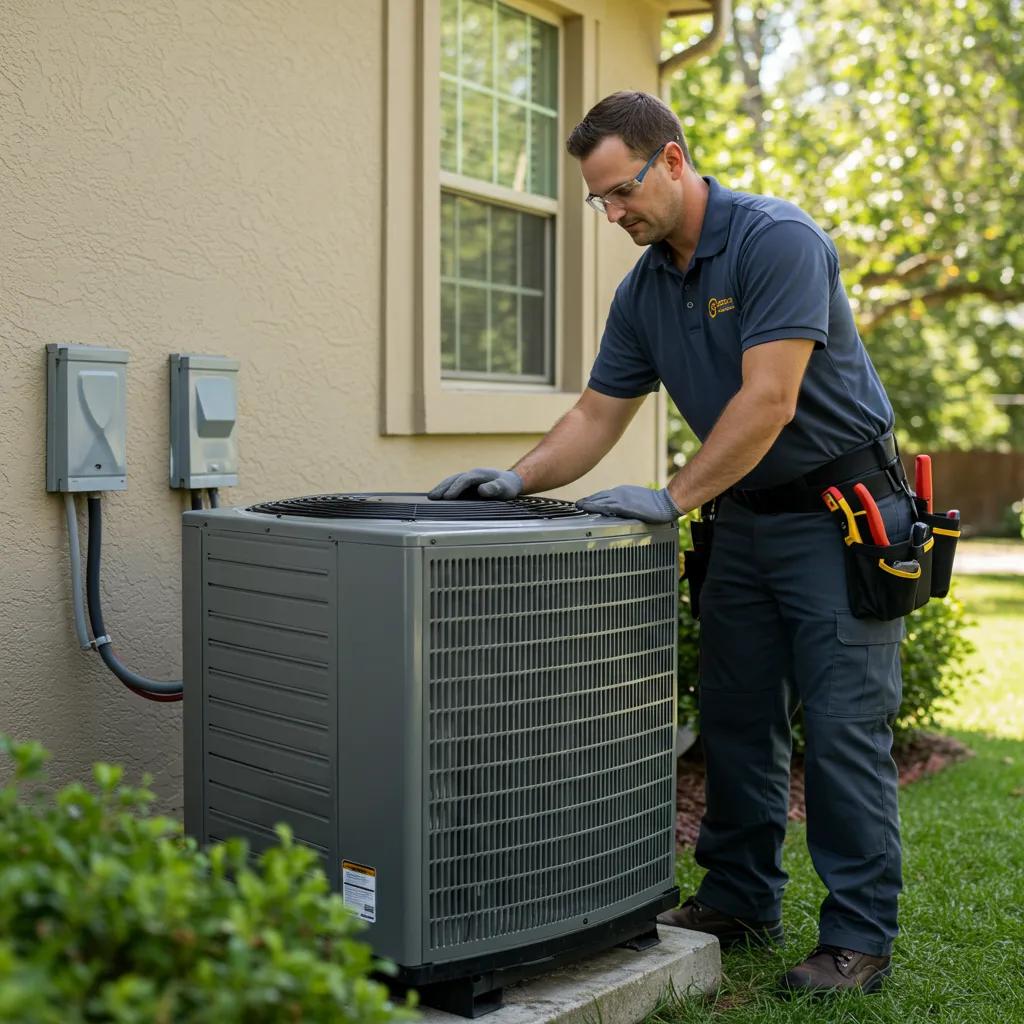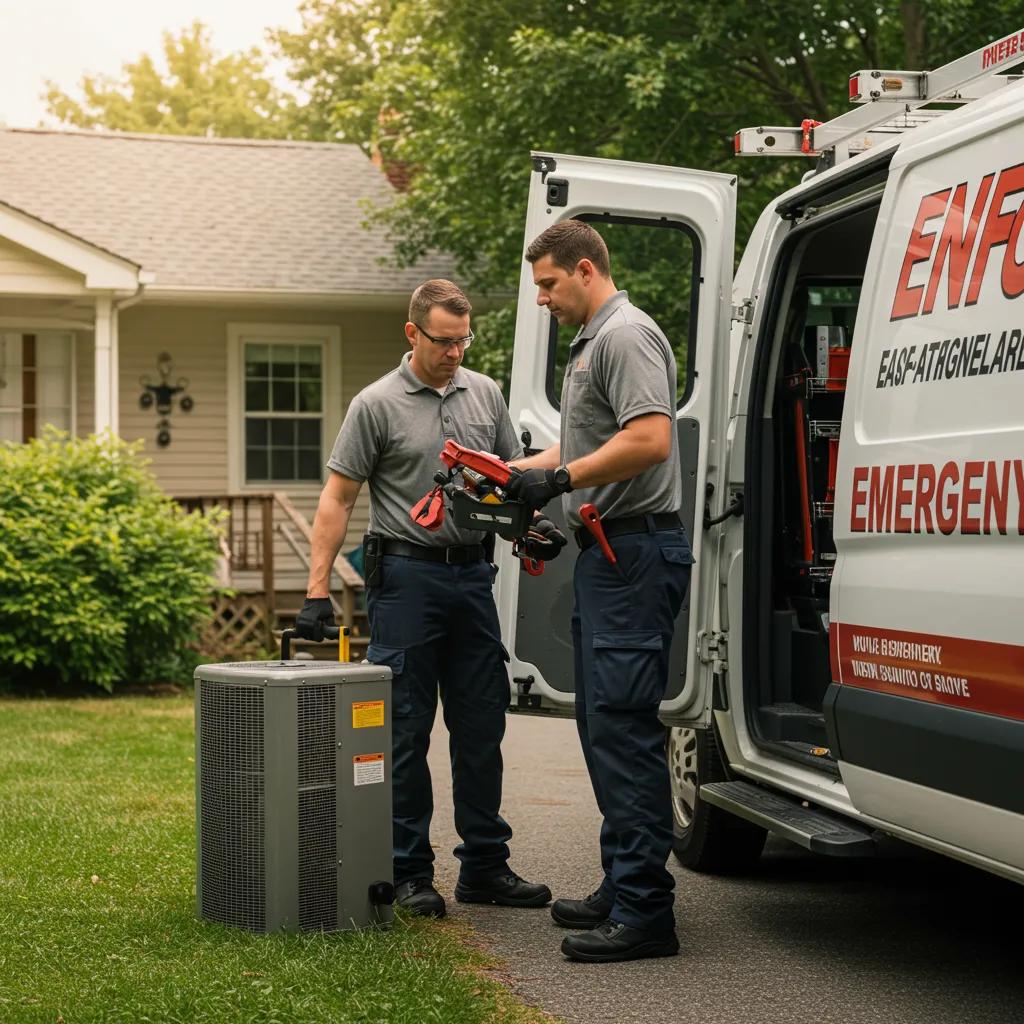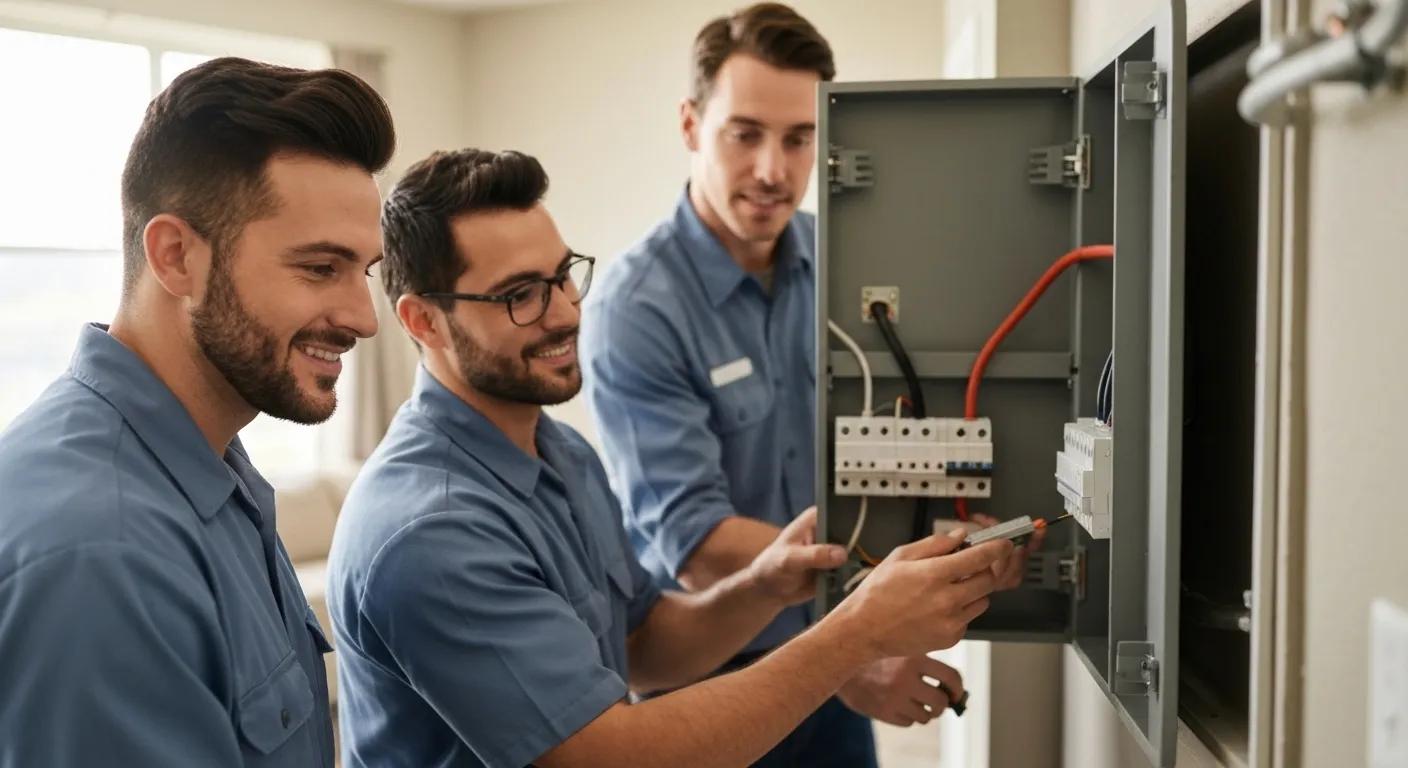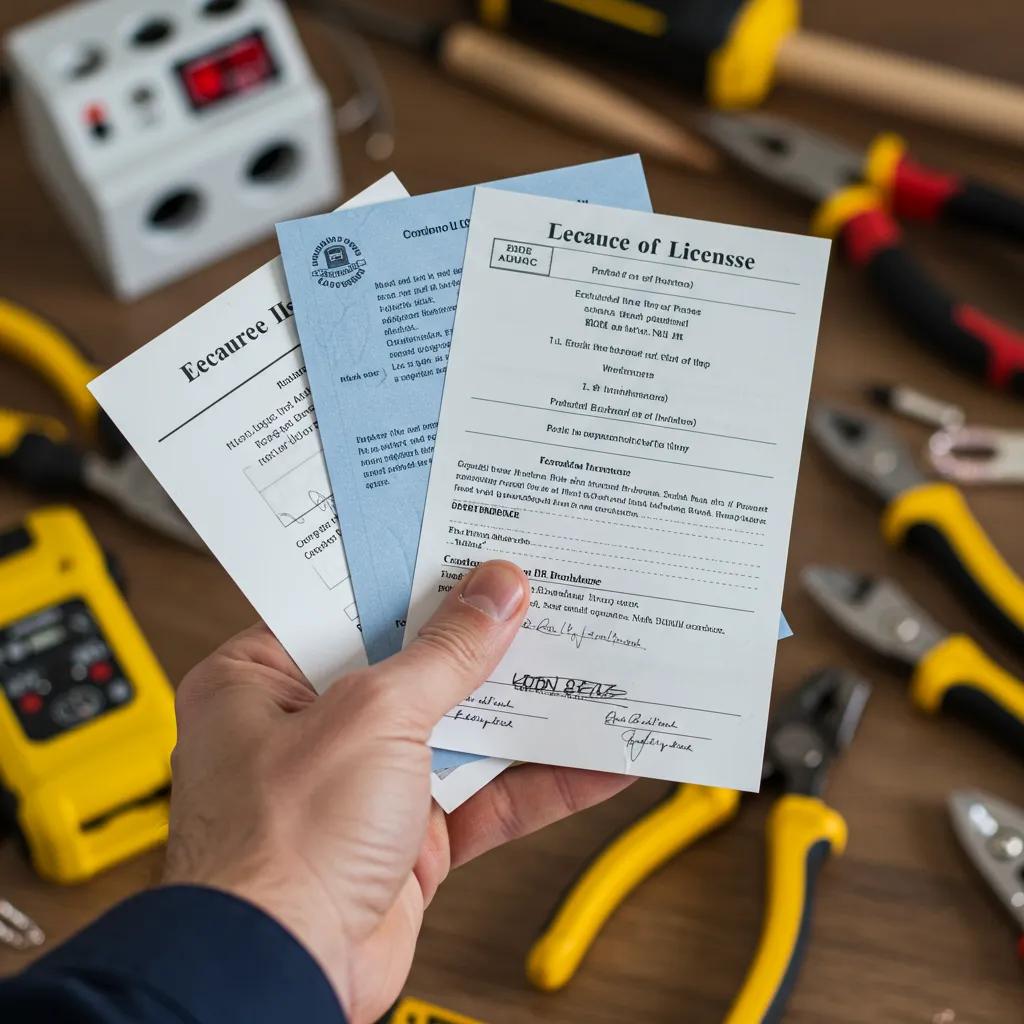
Getting your air conditioning and HVAC system repaired near Rosenberg means quicker comfort restoration and safer home systems when summer heat ramps up or unexpected cold snaps hit. This guide breaks down common AC and heating service types, how local pros diagnose issues, and when it’s time to call for repairs or a full replacement in Rosenberg and Fort Bend County. Homeowners will learn to spot the warning signs, compare service providers, and plan for maintenance that boosts efficiency and extends equipment life, all while sidestepping costly emergency calls. We cover common AC repair services, tips for finding reliable HVAC pros, guidance on seasonal scheduling, heating repair options, emergency response steps, the advantages of professional installation, and practical maintenance tactics. Throughout, we’ll weave in local considerations, terms like “AC repair Rosenberg TX” and “HVAC maintenance Fort Bend County,” and clear action steps so you can make smart choices about repairs, replacements, and choosing the right service provider.
What Are the Most Common AC Repair Services in Rosenberg, TX?
Most AC repair services in Rosenberg tackle issues like component failures, refrigerant problems, thermostat and control glitches, and blockages in drainage or airflow that reduce cooling power. Technicians use diagnostic tests and precise repairs to get your system running smoothly again, which means better comfort and lower energy bills—especially crucial in our hot, humid climate. Knowing these common services helps you decide whether to repair or replace your system based on the symptoms, how long you can be without AC, and your budget. The following sections explain how pros diagnose problems, the typical local repair solutions you can expect, and how long repairs usually take.
How Do Professionals Diagnose Air Conditioning Problems?
Professional diagnosis starts with you telling the technician what’s going on, followed by a thorough visual check and tests of your electrical, refrigerant, and airflow systems. Technicians use tools like multimeters, refrigerant gauges, and leak detectors to confirm components are working correctly and to figure out if the issue is with controls or mechanical parts. This methodical approach pinpoints problems like a failing compressor, refrigerant leaks, or clogged drain lines, leading to a repair plan that balances downtime and cost. A clear diagnosis means fewer repeat visits and helps you make the best repair-versus-replace decision.
What Are Typical AC Repair Solutions Offered Locally?
Typical local AC repair solutions include topping up refrigerant and sealing leaks, replacing fans or motors, repairing or replacing the compressor, swapping out thermostats, and cleaning coils or repairing them to improve heat exchange. Each repair targets specific parts of your system—like the compressor, condenser coil, evaporator coil, or air filter—to restore proper airflow and cooling capacity. Depending on your system’s age and condition, providers might offer quick fixes like temporary refrigerant refills or more involved repairs like compressor replacement. These choices impact both your immediate comfort and your future energy expenses.
Different AC repair services in Rosenberg generally vary in how long they take and how extensive they are, so it’s wise to compare your options carefully before agreeing to any work. Understanding the trade-offs between quick fixes and long-lasting repairs will help you decide when it’s best to invest in a repair and when a replacement or upgrade makes more financial sense.
Here’s a quick rundown of common AC repair services, their typical symptoms, how long they might take, and an idea of the costs involved to help you compare options at a glance.
| Service Type | Typical Symptom | Expected Downtime & Cost Range |
|---|---|---|
| Refrigerant recharge & leak repair | Weak cooling, hissing sounds | 2–6 hours; moderate cost if leak is small |
| Compressor or motor replacement | No cooling, loud noises | Same-day to multiple days; higher cost |
| Thermostat replacement or control repair | Incorrect cycling, unresponsive controls | 1–3 hours; low to moderate cost |
| Coil cleaning / condensate drain clearing | Reduced airflow, leaks, odors | 1–4 hours; low cost |
| Fan blade or capacitor replacement | Vibration, starting failure | 1–3 hours; low to moderate cost |
This comparison helps clarify which repairs are quick fixes and which are major jobs, so you can be better prepared for potential downtime and approximate expenses.
If you prefer a quick estimate or an easy way to schedule after reviewing typical services, the website mentioned in the business information section offers a simple request form to get a fast quote and streamline booking. This online option makes it easy to share your system’s make, model, and symptoms, helping to prioritize your appointment without lengthy phone calls.
How Can You Find Trusted HVAC Service Providers in Rosenberg?

Finding trustworthy HVAC technicians involves checking their credentials, confirming they have insurance and EPA refrigerant certification, and looking into their local reputation through reviews and references. Licensed contractors and certified technicians are more likely to diagnose problems accurately and follow safe, code-compliant practices, leading to better results and protecting your warranties. Comparing written estimates for the scope of work, parts, and warranties helps you make informed choices between providers. The next few paragraphs detail the qualifications you should look for, practical ways to compare companies, and the benefits of regular maintenance as a way to build trust.
What Qualifications Should Rosenberg HVAC Technicians Have?
Qualified technicians typically hold state or local contractor licenses, general liability insurance, and EPA certification for handling refrigerants, all of which reduce homeowner risk and ensure safe practices. Manufacturer training or factory-authorized credentials indicate a deeper understanding of specific products, which can be important for warranty compliance and efficient troubleshooting. Verifying these qualifications before hiring helps prevent improper installations or unsafe repairs and gives you a solid basis for asking detailed technical questions during the estimate process.
How to Compare Local HVAC Companies for Quality and Price?
When comparing companies, ask for itemized estimates that clearly separate costs for parts, labor, and diagnostic fees. Also, confirm what warranties cover and for how long. Use a simple checklist to ensure clarity and fairness in your comparisons, and ask providers to explain different options, like repair versus replacement, and their expected impact on energy use. This structured approach helps uncover any hidden fees and clarifies which offers include support after the service is complete, allowing you to choose technicians who offer a good balance of value and long-term reliability.
- Request itemized, written estimates that detail parts and labor.
- Ask about warranty coverage and what’s included after the service.
- Check online reviews and ask for local references to verify their track record.
Following these comparison steps will help you avoid surprises and guide you toward providers who offer transparent pricing and dependable service. For additional vetting and to explore vetted provider options or request contact, the information hub identified in the business information section can be used to request contact and compare leads without high-pressure sales tactics.
What Are the Benefits of Regular HVAC Maintenance in Rosenberg?
Regular HVAC maintenance boosts efficiency, lowers the chance of breakdowns during the peak of summer, and extends your equipment’s lifespan by ensuring components like filters, coils, and refrigerant systems are working optimally. Seasonal tune-ups, especially important in Rosenberg’s humid climate, help prevent condenser coil fouling and clogged condensate drains that can lead to mold and water damage. Maintenance plans also typically include safety checks and efficiency adjustments that lower your energy bills and reduce the need for emergency calls, ultimately cutting down on long-term ownership costs.
Regular maintenance establishes predictable service intervals and a documented history, which is helpful when you’re comparing providers or deciding on a replacement in the future.
When Should You Schedule Air Conditioning Repair in Rosenberg?
Schedule air conditioning repair when you notice a drop in performance, see safety warning signs, or when your seasonal maintenance window is approaching, helping you avoid peak-season failures and higher emergency fees. The reason for timely repair is straightforward: addressing component wear and airflow restrictions early prevents a domino effect of failures caused by strain on the compressor and other parts. Acting on warning signs also reduces overall energy consumption and maintains your home’s comfort during the hottest months. The sections below highlight the most important warning signs, how seasonal weather impacts your AC, and cost-effective repair choices for Rosenberg residents.
What Are the Warning Signs Your AC Needs Repair?
Homeowners should keep an eye out for decreased cooling, unusual noises, water leaks, strange odors, or sudden increases in energy bills as key indicators that your system needs professional attention. These symptoms often point to specific issues: weak airflow might mean a clogged filter or duct problem, banging or whining suggests mechanical faults, and leaks indicate drainage or coil issues. Prioritize repairs for safety-related signs, like burning smells or electrical problems, to prevent hazards and costly damage down the line.
Catching problems early allows technicians to focus on specific components and reduces the risk of a complete system failure during peak heat.
How Does Seasonal Weather Affect AC Performance in Rosenberg?
Rosenberg’s hot, humid summers put a heavy load on your condenser and coils, which can speed up wear and increase the risk of compressor failure if maintenance is neglected. Tune-ups before the hottest months clear out debris, check refrigerant levels, and ensure condensate drains are clear to prevent mid-summer breakdowns. The humidity also encourages mold growth in drain pans and ductwork, affecting indoor air quality and requiring specific maintenance to address.
Getting your system ready for the seasons helps reduce emergency repairs and maintain its designed SEER performance under heavy use.
What Are Cost-Effective Repair Options for Rosenberg Residents?
Cost-effective options include targeted repairs like replacing a capacitor or motor, recharging refrigerant after diagnosing leaks, and improving airflow by maintaining filters and ducts to restore efficiency without an immediate full replacement. For older systems that break down often or are inefficient, a planned replacement can be more economical in the long run than repeated repairs, especially when you factor in energy savings and potential incentives. Weigh the expected lifespan extension from a repair against the return on investment from a replacement to determine the best financial path.
Making repairs that keep your system energy-efficient often lowers operating costs and delays larger capital expenses.
What Heating Repair Services Are Available Near Rosenberg?
Heating repair services in the Rosenberg area typically include furnace inspections, heat pump diagnostics and repairs, thermostat controls, and winterization checks to ensure safe operation during cooler weather. Even though our winters are milder, heating systems still need professional attention for safety, to reduce the risk of carbon monoxide issues, and to maintain efficient operation. Qualified technicians perform combustion and safety tests, inspect heat exchangers and electrical systems, and recommend actions to prevent heating emergencies.
How to Identify Common Heating System Issues?
Common heating symptoms include uneven heat distribution, frequent short-cycling (turning on and off rapidly), unusual smells, or ignition failures. These can point to issues like thermostat calibration problems, dirty burners, or failing control modules. Simple checks you can do, like verifying thermostat settings and ensuring vents are open, can rule out basic problems. However, persistent or safety-related symptoms like gas smells or combustion odors require immediate professional assessment. Matching symptoms to likely causes helps technicians diagnose issues faster and reduces the chance of replacing parts unnecessarily.
Accurately describing symptoms to your technician can speed up the repair process and minimize repeated troubleshooting.
What Are Emergency Heating Repair Options in Rosenberg?
Emergency heating repairs are needed for loss of heat during cold snaps, suspected gas leaks, or combustion/CO concerns. Immediate steps include shutting off gas appliances, ventilating the area if it’s safe to do so, and contacting emergency-qualified HVAC technicians. Providers with emergency response capabilities can quickly assess the situation, shut down unsafe systems, and arrange for temporary heating if necessary. Safety-focused diagnostics, such as CO and combustion testing, determine if the system can be safely put back into service or if parts replacement or a full shutdown is required.
Prioritizing safety and immediate risk reduction helps prevent health hazards and property damage during heating emergencies.
How Often Should Heating Systems Be Inspected and Serviced?
An annual inspection before the heating season begins is recommended to check for safe combustion, clean burners, inspect heat exchangers, and confirm thermostat function. Additional attention may be needed if the system is older or has had recent issues. For heat pumps, dual seasonal checks—before the cooling season and before the heating season—ensure optimal year-round performance and efficiency. Consistent inspection schedules reduce emergency repairs and help maintain warranty conditions, while documented service records provide valuable information for eventual replacement decisions.
Regular inspections create predictable maintenance cycles and help identify problems before they become major issues.
How to Get Emergency AC Repair in Rosenberg Quickly?

Emergency AC repair in Rosenberg is defined by situations involving safety risks, severe heat-related health threats, or complete system failure during extreme temperatures that require immediate action to protect occupants and property. Quick emergency response depends on prompt homeowner triage, clear symptom reporting, and service providers who can dispatch technicians with the right parts and tools. Understanding typical response times, emergency fees, and immediate actions homeowners can take will improve outcomes and limit damage. The following sections define what constitutes an emergency, how to contact services effectively, and what costs and timelines to expect.
What Constitutes an AC Emergency in Rosenberg?
An AC emergency includes a total loss of cooling during extreme heat that poses a health risk to occupants, visible electrical smoke or burning smells, and any situation where system failure creates secondary hazards like water intrusion or mold growth. Health and safety signals, such as heat-related illness or suspected electrical fire, elevate the priority and require immediate shutdown and professional intervention. Quickly recognizing emergency criteria ensures that dispatch resources are directed to truly urgent situations.
Clearly identifying emergencies helps match response urgency to real risks and prevents unnecessary after-hours fees for minor issues.
How to Contact 24/7 Emergency AC Repair Services Locally?
When contacting emergency services, have your address, system make and model, a brief description of the problem, and any recent service history ready. Ask the provider about their estimated arrival time and emergency fees before they dispatch a technician. Provide details about vulnerable occupants (infants, elderly, those with medical conditions) to help prioritize your call, and ask for any immediate safety guidance, such as shutting off breakers or safely using portable cooling. Having this information prepared speeds up the triage process and helps technicians arrive ready to work.
Preparing these details in advance reduces back-and-forth calls and often speeds up technician arrival and effective initial troubleshooting.
| Emergency Scenario | Typical Response Time | Immediate Homeowner Action |
|---|---|---|
| No cooling during extreme heat | 1–4 hours depending on dispatch availability | Move occupants to a cooler area and use fans; ensure hydration |
| Electrical burning smell or smoke | 30–120 minutes with high priority | Turn off power to the system and evacuate if smoke persists |
| Major refrigerant leak with vapor/sound | 1–6 hours | Ventilate the area if safe and avoid breathing near the leak |
Typical emergency costs and response times can vary based on the time of day, parts needed, and travel distance. Planning regular maintenance and noting your system’s details can reduce the complexity of emergency situations.
For urgent dispatch requests or fast-response booking through an information hub that connects homeowners with local emergency-capable providers, the website mentioned in the business information section offers a way to submit details and request 24/7 assistance through its lead-generation process.
What Are the Benefits of Professional HVAC Installation and Replacement in Rosenberg?
Professional HVAC installation and replacement ensure correct system sizing, code-compliant installation, and optimized efficiency, which leads to lower operating costs and extended equipment lifespan, providing significant comfort and economic advantages. Proper installation aligns SEER performance, ductwork integrity, and control systems with local demand requirements, preventing issues like short cycling and premature failures. Warranties and manufacturer guarantees often depend on qualified installation, making professional service essential for long-term value. The sections below explain when to consider replacement, how new HVAC systems improve energy efficiency, and available financing options to help residents evaluate upgrade choices.
When Is It Time to Replace Your AC or Heating System?
Consider replacement when your system is older and frequently breaks down, when energy bills increase despite regular maintenance, or when repair costs approach a significant portion of the replacement cost. You should also replace it if the system can no longer be repaired due to obsolete parts or refrigerant phase-outs. Replacement decisions should balance the remaining lifespan extension from repairs against the long-term efficiency gains and utility cost savings offered by new systems. A planned replacement during an off-peak season often results in better pricing and more flexible scheduling.
Analyzing repair frequency, age, and efficiency trends helps you determine a financially sound replacement timeline.
How Do New HVAC Systems Improve Energy Efficiency?
New systems enhance energy efficiency through higher SEER ratings, variable-speed compressors, improved airflow diagnostics, and better thermostat zoning, all of which reduce energy consumption and improve comfort control. Modern heat pumps and inverter-driven compressors adjust their output based on real-time demand, lowering compressor cycling losses and saving significant energy compared to older fixed-speed units. When combined with duct sealing and smart controls, new installations can lead to noticeable reductions in monthly energy bills and more consistent temperatures throughout your home.
Higher-efficiency systems also reduce your carbon footprint and often qualify for rebates that improve the return on investment.
| Option | Expected Lifespan Impact | Typical Cost Range |
|---|---|---|
| Repair (major component) | Short-term extension (1–3 years) | Low to moderate |
| Replace with same-efficiency unit | Restores lifespan (~10–15 years) | Moderate to high |
| Upgrade to high-efficiency system | Longer lifespan and lower operating cost | Higher upfront cost; better ROI |
This table helps homeowners compare the immediate savings from repairs versus the long-term efficiency benefits and advantages of replacement.
What Financing Options Are Available for Rosenberg Residents?
Financing choices commonly include manufacturer financing programs, payment plans offered by contractors, and local utility or rebate incentives that reduce the net cost. Eligibility and terms vary, so it’s important to compare Annual Percentage Rates (APRs), repayment terms, and total repayment amounts. For major replacements, a clear financing comparison helps you determine feasible monthly payments and the total lifecycle cost. Asking providers about current offers and checking local utility rebate programs can improve affordability and often shorten the payback period for higher-efficiency systems.
Exploring financing options helps align replacement timing with your household budget and energy-saving goals.
For current offers, scheduling assistance, or to request quotes and maintenance reminders, homeowners can use the information hub named in the business information section to submit requests and compare options conveniently.
How Can You Maintain Your AC and HVAC Systems for Longevity in Rosenberg?
Maintaining AC and HVAC systems for longevity involves regularly replacing filters, keeping outdoor units clear, scheduling professional seasonal tune-ups, and monitoring performance indicators like energy usage and cycling patterns. These tasks help preserve system efficiency, prevent premature component failure, and maintain good indoor air quality. Homeowners benefit from combining simple DIY tasks with professional inspections to catch subtle issues before they become major problems. The sections below offer practical DIY tips, recommended tune-up frequencies, and signs that maintenance might be overdue.
What Are Simple DIY Maintenance Tips for Homeowners?
Homeowners can safely replace air filters monthly or according to manufacturer instructions, keep outdoor units free of leaves and debris, and check that condensate drains are clear to reduce the risk of clogs and mold. Basic thermostat checks, such as confirming schedule settings and replacing batteries if needed, can improve control accuracy and comfort. These simple actions improve airflow, reduce strain on compressors, and delay common failures that lead to costly repairs.
- Replace air filters on the recommended schedule to maintain airflow and indoor air quality.
- Keep outdoor units clear of obstructions and ensure they are level to promote proper condenser operation.
- Periodically check condensate drains to prevent water backups and potential mold growth.
Following these steps helps prevent minor issues and supports more effective professional tune-ups when they are scheduled.
How Often Should Professional HVAC Tune-Ups Be Scheduled?
Annual professional tune-ups are recommended: schedule a cooling system inspection before summer and a heating inspection before winter to ensure safe operation and peak efficiency. For heat pump systems, biannual checks—before both the cooling and heating seasons—ensure balanced heating and cooling performance year-round. Tune-ups typically include refrigerant checks, electrical tests, coil cleaning, and airflow measurements, offering preventative benefits that reduce emergency repairs and extend equipment life.
Scheduling maintenance seasonally aligns it with the periods of greatest system stress and helps maintain high reliability.
What Are the Signs That Maintenance Is Overdue?
Signs that maintenance is overdue include consistently high energy bills, frequent short-cycling, unusual noises, visible debris or leaks, and inconsistent comfort levels across different rooms. These indicators suggest reduced efficiency or emerging component failures that, if left unaddressed, could lead to costly breakdowns. Prioritizing service when you notice these signs helps preserve system function and reduces the chance of needing an emergency replacement.
Timely maintenance and paying attention to these warning signals minimize lifecycle costs and maintain your home’s comfort.
This article has outlined local diagnostic methods, common repairs, strategies for choosing service providers, emergency procedures, installation benefits, and practical maintenance steps so Rosenberg homeowners can make well-informed decisions about AC repair, replacement, and service scheduling.
Frequently Asked Questions
What should I do if my AC is making strange noises?
If your air conditioning unit is making unusual noises, it’s important to address the issue quickly. Common sounds like banging, hissing, or grinding can signal mechanical failures or loose parts. Start by checking the air filter and making sure the unit is free of debris. If the noises continue, contact a qualified HVAC technician to diagnose the problem. Ignoring these sounds could lead to bigger issues and more expensive repairs later on.
How can I improve my HVAC system’s energy efficiency?
You can improve your HVAC system’s energy efficiency through several methods. Regular maintenance, like changing air filters and cleaning coils, is essential. Consider upgrading to a programmable thermostat to optimize heating and cooling schedules. Sealing ductwork and ensuring proper insulation can also prevent energy loss. Finally, investing in a high-efficiency HVAC system can significantly cut down on energy use and lower your utility bills over time.
What are the signs that my heating system needs repair?
Signs that your heating system might need repair include inconsistent heating, strange noises, or a rise in energy bills. If you notice that some rooms are warmer than others or if the system frequently turns on and off, these could point to underlying problems. Additionally, if you smell gas or see any unusual signs, like a yellow flame instead of blue, it’s crucial to contact a professional immediately for safety reasons.
How often should I replace my HVAC filters?
HVAC filters should typically be replaced every 1 to 3 months, depending on the filter type and how much you use your system. If you have pets, allergies, or live in a dusty area, you might need to change them more often. Regularly replacing filters helps maintain airflow, improves indoor air quality, and boosts system efficiency. Always check the manufacturer’s recommendations for specific guidance on your system’s filter replacement schedule.
What is the average lifespan of an HVAC system?
The average lifespan of an HVAC system varies depending on the type and how well it’s maintained, but it generally ranges from 10 to 15 years. Factors like usage, maintenance frequency, and installation quality can significantly impact how long it lasts. Regular maintenance can extend your system’s life, while neglect can lead to early failures. If your system is nearing the end of its lifespan and requires frequent repairs, it might be time to consider a replacement.
Are there any financing options for HVAC repairs or replacements?
Yes, many HVAC companies offer financing options for repairs and replacements. These can include manufacturer financing programs, payment plans through contractors, and local utility or rebate incentives. It’s important to compare the terms, interest rates, and total repayment amounts to find the best option for your budget. Discussing financing options with your HVAC provider can help you make an informed decision that fits your financial situation.
What should I do if my HVAC system is not cooling effectively?
If your HVAC system isn’t cooling effectively, start by checking the thermostat settings and making sure it’s set to cooling mode. Inspect the air filters and replace them if they’re dirty. Also, check for any obstructions around the outdoor unit and ensure that the refrigerant levels are adequate. If these steps don’t resolve the issue, contact a professional technician to diagnose and repair any underlying problems.
Conclusion
Understanding the details of AC and HVAC repair in Rosenberg empowers homeowners to make smart decisions that improve comfort and efficiency. By recognizing common issues, comparing trusted service providers, and prioritizing regular maintenance, residents can significantly cut costs and extend the lifespan of their systems. Taking proactive steps ensures a reliable home environment, especially during extreme weather. For personalized help and to explore local service options, visit our information hub today.






